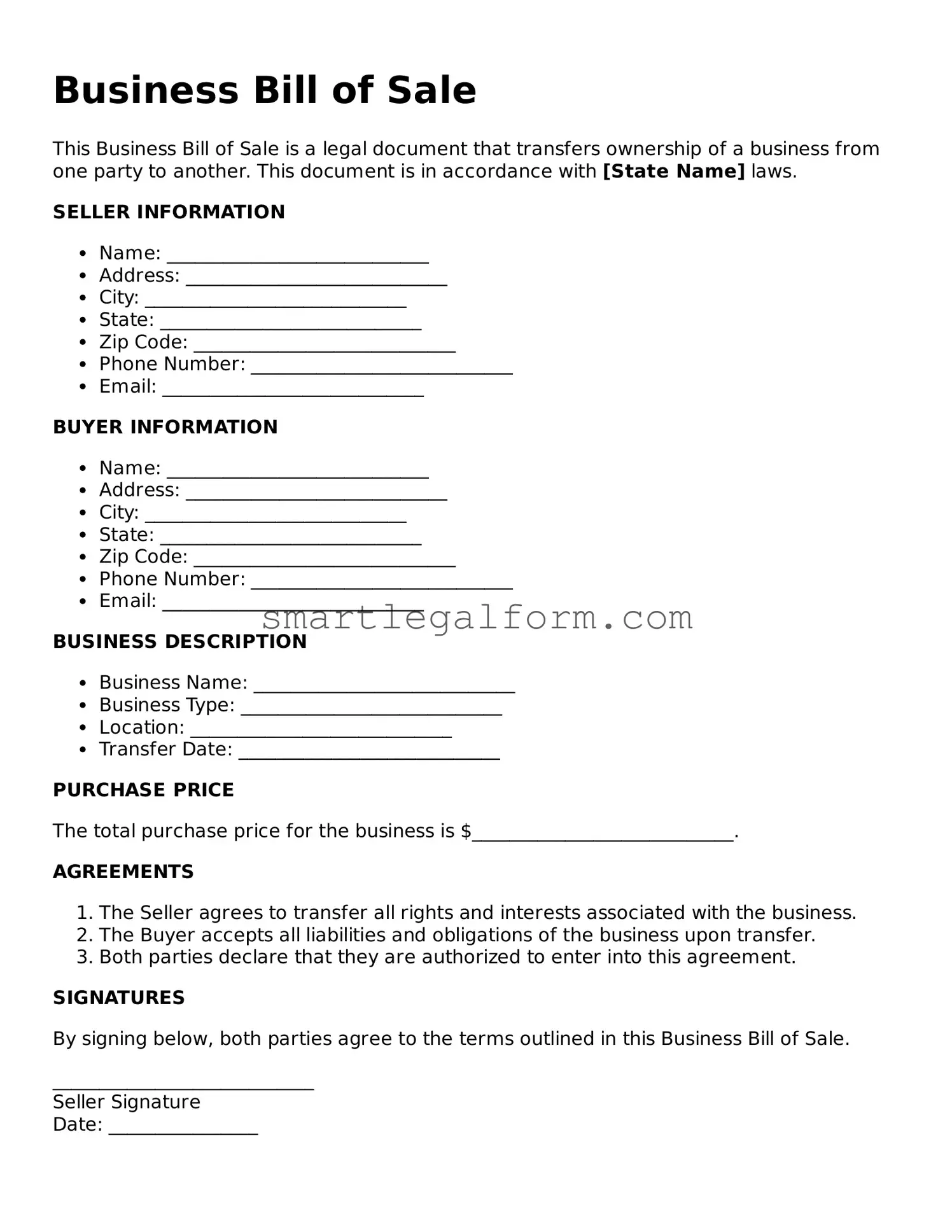Filling out a Business Bill of Sale form can be straightforward, but many people make common mistakes that can lead to complications. One frequent error is not providing complete information about the buyer and seller. It’s essential to include full names, addresses, and contact details. Omitting any of this information can create confusion and make it difficult to enforce the agreement later.
Another common mistake is failing to accurately describe the business being sold. This includes not detailing the assets included in the sale, such as equipment, inventory, or intellectual property. A vague description can lead to disputes down the line regarding what was actually included in the transaction.
People often overlook the importance of including the sale price. Clearly stating the amount paid for the business is crucial. Without this, the document may lack legal clarity, making it harder to resolve any future disagreements over the terms of the sale.
Additionally, many individuals forget to sign and date the document. A Business Bill of Sale must be signed by both parties to be legally binding. If either party neglects to sign, the agreement may be rendered invalid, leaving both parties without legal recourse.
Another mistake involves not having witnesses or notarization when required. Depending on the state, having a witness or notarizing the document may be necessary for it to hold up in court. Failing to do so can weaken the enforceability of the sale.
Finally, people sometimes assume that a generic template will suffice for their specific situation. Each business transaction is unique, and using a one-size-fits-all approach can lead to missing crucial details. Tailoring the form to fit the specifics of the sale is vital for protecting both parties’ interests.
